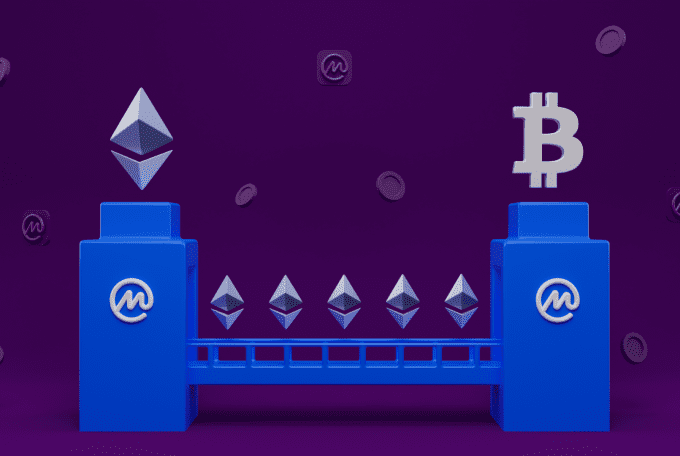Stablecoins have emerged as a significant innovation within the cryptocurrency ecosystem, providing a bridge between the volatile nature of cryptocurrencies and the stability of traditional fiat currencies.
Ethereum, as a leading blockchain platform, plays a crucial role in the development and adoption of stablecoins.
In this article, we will explore the concept of stablecoins, examine the role of Ethereum in their proliferation, discuss the benefits they offer, analyze different types of stablecoins, highlight challenges and risks, explore the integration of Ethereum with stablecoins, and speculate on the future developments in this dynamic landscape.


What are Stablecoins?
Stablecoins are a form of cryptocurrency designed to minimize price volatility. They achieve this by pegging their value to a specific asset or a combination of assets, such as fiat currency, precious metals, or other cryptocurrencies.
This pegging mechanism ensures that stablecoins maintain a relatively stable value over time.
The Role of Ethereum
Ethereum has played a pivotal role in the growth of stablecoins due to its flexibility and programmability. Ethereum’s blockchain allows developers to create and deploy smart contracts, which are self-executing agreements with predefined rules.
These smart contracts enable the issuance and management of stablecoins, providing a secure and transparent ecosystem for users.
Benefits of Stablecoins
Stablecoins offer several benefits that make them attractive for various use cases, including everyday transactions, remittances, and decentralized finance (DeFi) applications.
1. Stability
The primary advantage of stablecoins is their stability. By pegging their value to a stable asset, stablecoins provide a reliable store of value and a medium of exchange.
This stability makes them suitable for day-to-day transactions, ensuring that users don’t face the uncertainty associated with traditional cryptocurrencies.
2. Accessibility
Stablecoins also offer increased accessibility compared to traditional financial systems. These digital assets can be sent and received instantly, providing a borderless and low-cost means of transferring value.
Individuals in regions with limited access to banking services can benefit greatly from stablecoins, as they enable financial inclusion and empower individuals to participate in the global economy.
3. Efficiency
The use of stablecoins improves transaction efficiency by eliminating intermediaries and reducing settlement times. Traditional financial transactions often involve multiple intermediaries and can take days to settle.
With stablecoins, transactions can be executed instantly, enabling quick and efficient transfers of value.
This efficiency is particularly valuable in cross-border transactions, where stablecoins can bypass the complexities and delays associated with traditional banking systems.
Challenges and Risks
While stablecoins offer numerous benefits, they also face challenges and risks that need to be addressed for widespread adoption.
1. Centralization
Some stablecoins may suffer from centralization concerns, particularly if they are heavily reliant on a single entity for governance or collateral management.
Centralized control can undermine the decentralization principles of blockchain technology and introduce counterparty risks.
2. Regulatory Concerns
Stablecoins, especially those pegged to fiat currencies, may face regulatory scrutiny and challenges. Regulators are concerned about potential risks related to money laundering, consumer protection, and systemic stability.
Establishing a clear regulatory framework that balances innovation and safeguards is essential for the sustainable growth of stablecoins.
3. Technical Vulnerabilities
Smart contracts and the underlying blockchain technology are susceptible to technical vulnerabilities, such as bugs or hacks.
Exploiting these vulnerabilities can lead to security breaches, loss of funds, or manipulation of stablecoin values. Thorough security audits, ongoing testing, and robust governance mechanisms are crucial to mitigate these risks.
Ethereum and Stablecoin Integration
Ethereum’s programmability and thriving ecosystem have made it an ideal platform for the integration of stablecoins. Many prominent stablecoins, such as Tether (USDT) and USD Coin (USDC), are built on the Ethereum blockchain.
Ethereum’s compatibility with ERC-20 tokens, which are widely used for token issuance and interoperability, has facilitated the seamless integration of stablecoins into decentralized exchanges, lending platforms, and other DeFi applications.
The Ethereum ecosystem also supports innovative protocols like MakerDAO, which enables the creation of the Dai stablecoin. Dai is maintained through a decentralized system of collateralized debt positions, leveraging Ethereum’s smart contracts and oracles to maintain its stability.
Conclusion
Stablecoins, with their ability to provide stability, accessibility, and efficiency, have emerged as a crucial component of the cryptocurrency ecosystem.
Ethereum’s flexible and programmable blockchain has played a vital role in the growth and integration of stablecoins, enabling innovative applications and use cases.
However, challenges such as centralization, regulatory concerns, and technical vulnerabilities must be addressed to ensure the long-term success of stablecoins.
As the future unfolds, stablecoins are expected to witness further advancements, including increased interoperability, diversified collateral options, regulatory frameworks, and improved scalability.
These developments will drive wider adoption and solidify stablecoins as a transformative force in the financial landscape.





